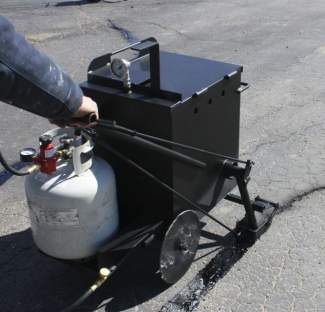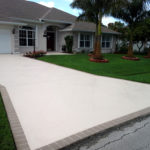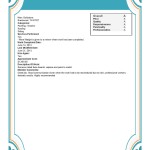Asphalt Crack Sealer
 Asphalt Crack Sealer is made for sealing the surface and protecting it from the elements such as UV light, salts, and oils. Crack sealants are rubberized and have the ability to seal the crack while staying flexible with the pavement’s movement. It is beneficial for active cracks that continue to extend in size and severity over time, crack sealants stop water and debris from entering the crack, protecting the longevity of the pavement.
Asphalt Crack Sealer is made for sealing the surface and protecting it from the elements such as UV light, salts, and oils. Crack sealants are rubberized and have the ability to seal the crack while staying flexible with the pavement’s movement. It is beneficial for active cracks that continue to extend in size and severity over time, crack sealants stop water and debris from entering the crack, protecting the longevity of the pavement.
Understanding the components and performance requirements of a sealant is extremely important. The economic benefits of crack sealing versus other forms of maintenance or restoration are no longer applicable if the wrong type of sealant is used. Depending on issues such as climate and vehicle and pedestrian traffic, the appropriate sealant varies with each job. There are basic properties that are necessary for acceptable performance for asphalt sealant.
1. Easily and properly placed in crack through standard application equipment.
2. Flexibility and extensibility to remain bonded to crack faces when extended at low temperatures.
3. Elasticity to restrict the entrance of foreign, noncompressible materials.
4. Adhesion to remain bonded to asphalt and concrete crack faces.
5. Resistance to softening and flow at high pavement temperature.
6. Resistance to degradation from the weather.
7. Low cure time.
The sealant should come from an approved source or one listed on the Qualified Products List (QPL), a state-provided resource that sets the standard for safe, quality products for pavement maintenance. The best performing sealant is a polymer-modified sealant that relaxes during full extension, placing less stress on the bond of the sealant, according to tests conducted by the American Society of Testing and Materials (ASTM), the American Association of State Highway and Transportation Officials (AASHTO) and federal agencies. Sealants should always be field tested before installation. Operators must ensure that the sealant packaging is not damaged.
Crack Filler Sealer
There are three major categories of asphalt creak sealant, namely hot-applied thermoplastic materials or hot melt crack and joint sealant, cold-applied thermoplastic materials and silicone crack sealant.
(1) Hot-applied thermoplastic materials or hot melt crack and joint sealants
The primary components of these sealants are asphalt cement, polymer, reclaimed rubber and mineral filler. They are for use on Asphalt Concrete Pavements (ACP) or Portland Cement Concrete Pavements (PCCP). These sealants come in two different varieties. Direct fire sealants are designed to perform in direct fire kettles, where heat is imposed directly onto the sealant. Oil-jacketed varieties are designed to melt under the influence of kettles that use heat transfer oil as a medium, where there’s less chance for burning and scorching. Contractors and municipalities should be aware of the type of melter available to them. Hot-pour sealant can be a good investment on any size project. How much sealant to purchase can be calculated with a hot pour crack sealant coverage calculator once a contractor or municipality receives job specifications. Sealant blocks, or biscuits, weigh approximately 30 pounds and are individually wrapped in polyethylene bags.
(2) Cold-applied thermoplastic materials
These types of sealants are rubberized asphalt emulsions with mineral fillers, used for narrow cracks up to 3/4 inch in width in ACP or PCCP pavements. These sealants cannot be used when rain is in the forecast or when the temperature is or will drop below 50º F. Cold pour crack sealants usually require stirring and can be applied with a pour pot or pressurized crack-filler equipment, followed by a squeegee (See Sealant Application). Cold-applied sealants are economically sound for smaller jobs but do not provide economic benefits on high-volume projects. These sealants are typically packaged in gallon-measurement pails, drums, or stick form.
(3) Silicone Crack Sealants
These types of sealants can be used for sealing expansion saw cuts. Silicone sealants are applied using bulk or tube dispensers and are typically packaged in drum, pail or tube form.
Contact us
 Phone Call |
 Text Message |
 |






